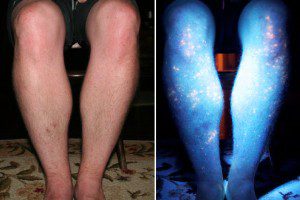
20 Apr INSIDE MOUNTAINFILM IN TELLURIDE: DEEPWATER HORIZON DISASTER
 Editor’s Note: It’s off season in Telluride now. Not a creature is stirring. But with May only weeks away, thoughts turn to the summer season. The kick off is Mountainfilm in Telluride. In the roll-up to the event, we continue to post timely blogs by festival director David Holbrooke and aide de camp, Lise Waring, on subjects near and dear: protecting and preserving endangered species and ideas and land, and the personalities who drive the action. This latest story by Lise was triggered by the anniversary of the Deepwater Horizon disaster in the Gulf Coast. Read it and weep.
Editor’s Note: It’s off season in Telluride now. Not a creature is stirring. But with May only weeks away, thoughts turn to the summer season. The kick off is Mountainfilm in Telluride. In the roll-up to the event, we continue to post timely blogs by festival director David Holbrooke and aide de camp, Lise Waring, on subjects near and dear: protecting and preserving endangered species and ideas and land, and the personalities who drive the action. This latest story by Lise was triggered by the anniversary of the Deepwater Horizon disaster in the Gulf Coast. Read it and weep.
By now, on the anniversary of the Deepwater Horizon oil spill in the Gulf of Mexico, most of us have quit thinking about the disaster. Judging from the photos below, we’re making a mistake.
 Less than six months after the spill, the FDA declared seafood from the Gulf safe for consumption. The agency continues to hold this stance: In January of 2012, the U.S. Food and Drug Administration’s (FDA) deputy commissioner, Michael Taylor, declared that “Gulf seafood is as safe to eat now as it was before the spill.”
Less than six months after the spill, the FDA declared seafood from the Gulf safe for consumption. The agency continues to hold this stance: In January of 2012, the U.S. Food and Drug Administration’s (FDA) deputy commissioner, Michael Taylor, declared that “Gulf seafood is as safe to eat now as it was before the spill.”
On his agency’s blog, Taylor describes how Polycyclic Aromatic Hydrocarbons (PAHs) — a group of potentially cancer-causing chemicals found in coal tar, crude oil and even chargrilled or “blackened” food — were measured and used as the safety marker by the FDA to reach its conclusion. The FDA tested over 10,000 seafood specimens and reported that, “in most cases, no PAHs were found, and, when they were, the PAH levels in the seafood were 100 to 1,000 times below the levels which would raise a health concern.” Taylor said, “The best way to understand how safe Gulf seafood is, is to visualize how much seafood you could eat and still not reach the levels of concern.”
So that was that. Right?
Well, no. Not exactly. The Natural Resources Defense Council (NRDC) unleashed a critique of the FDA’s risk assessment, stating that the FDA’s research is based upon outdated science and that the agency’s “safe levels” are especially dangerous for young children and pregnant women or anyone who eats a lot of seafood, allowing 10,000 times too much cancer-causing PAHs contamination in Gulf seafood.
These incongruences remain up for debate. Meanwhile, the Surfrider Foundation released a “State of the Beach” oil trend study a few days ago. Granted, Surfrider did not address marine life nor the consumption of seafood in its work, instead focusing on “human health and safety risks for recreational water activities at beaches.” So this blog, admittedly, compares apples to oranges.
Nonetheless, Surfrider collected tar samples (albeit only 71 sample sets) and tested for PAHs, and 90 percent of the tests found PAH concentrations in excess of “Immediately Dangerous to Life or Health” (as defined by the NIOSH/OSHA Occupational Health Guidelines for Chemical Hazards).
Let’s cut to the chase: Corexit — a product BP used to “disperse” the oil during clean-up efforts — appears to be making it tough for microbes to digest the oil, and it also appears to act as an absorption accelerant on wet skin.
Check out the photos. On the left are legs that were exposed to the ocean waters; on the right are the same legs under UV light. The tar that’s been treated with Corexit creates a “discernible fluorescent signature” when Illuminated with the proper UV light. This tar has permeated the skin and cannot be washed off.
There is far more to this study (and the others) than this meager summary, and we at Mountainfilm are not scientists, but we wonder if the FDA needs a UV light.


Sorry, the comment form is closed at this time.